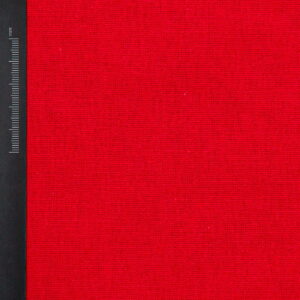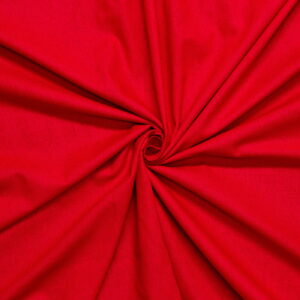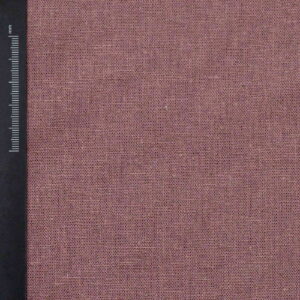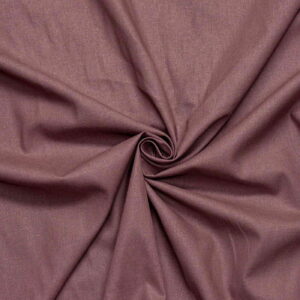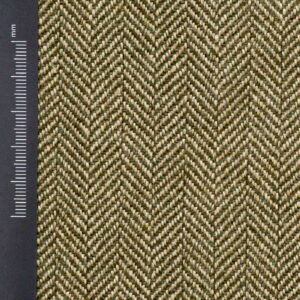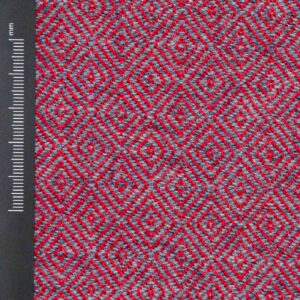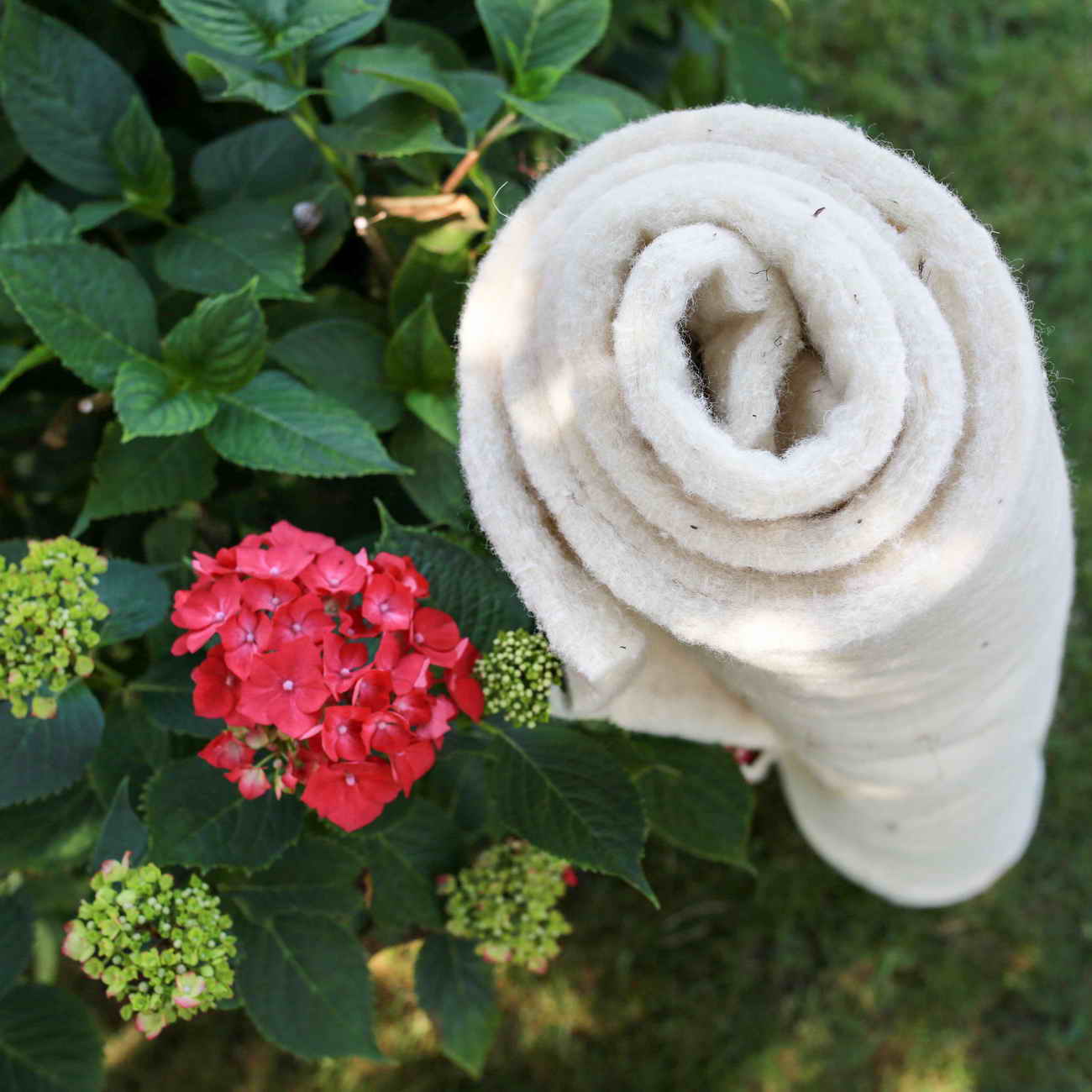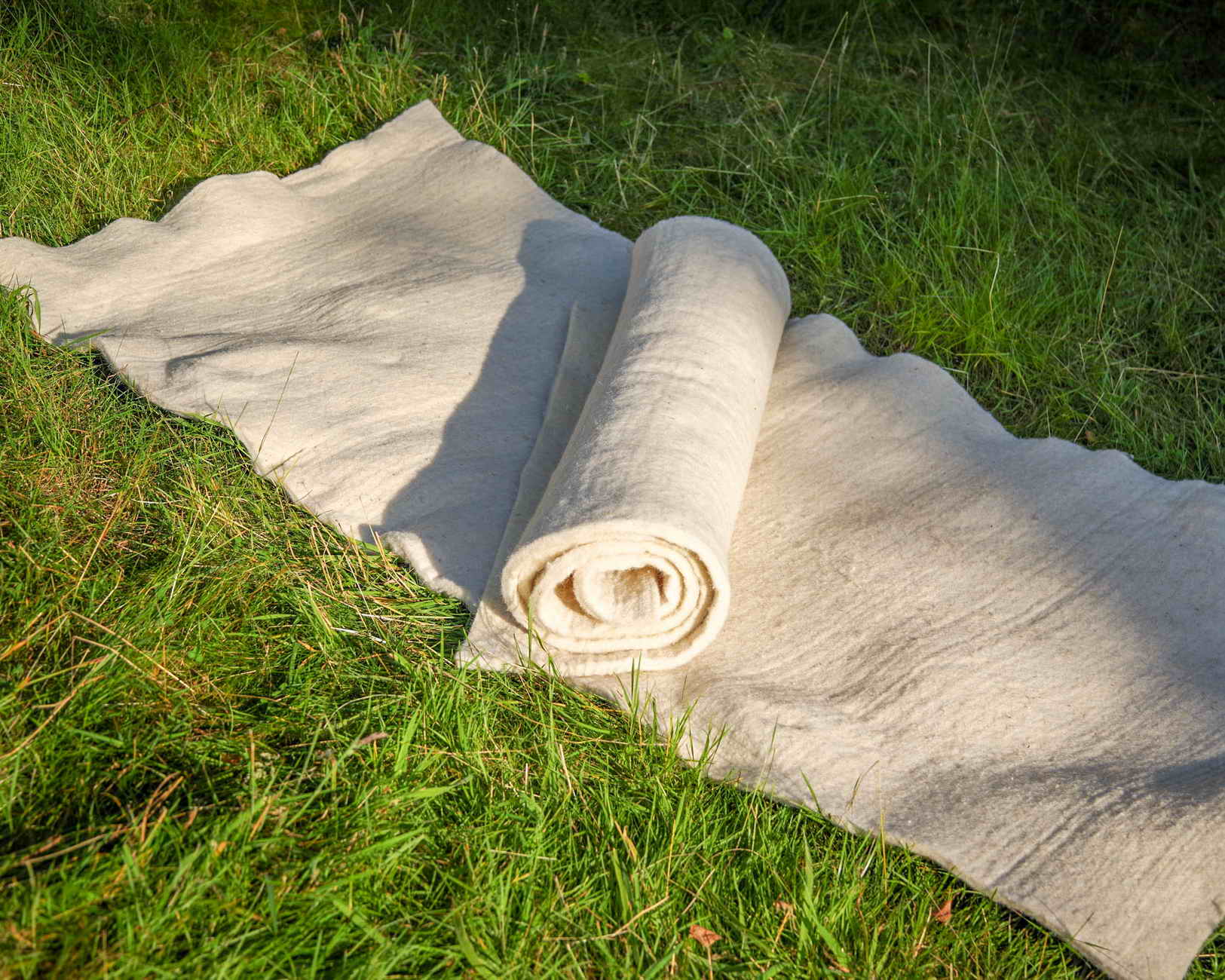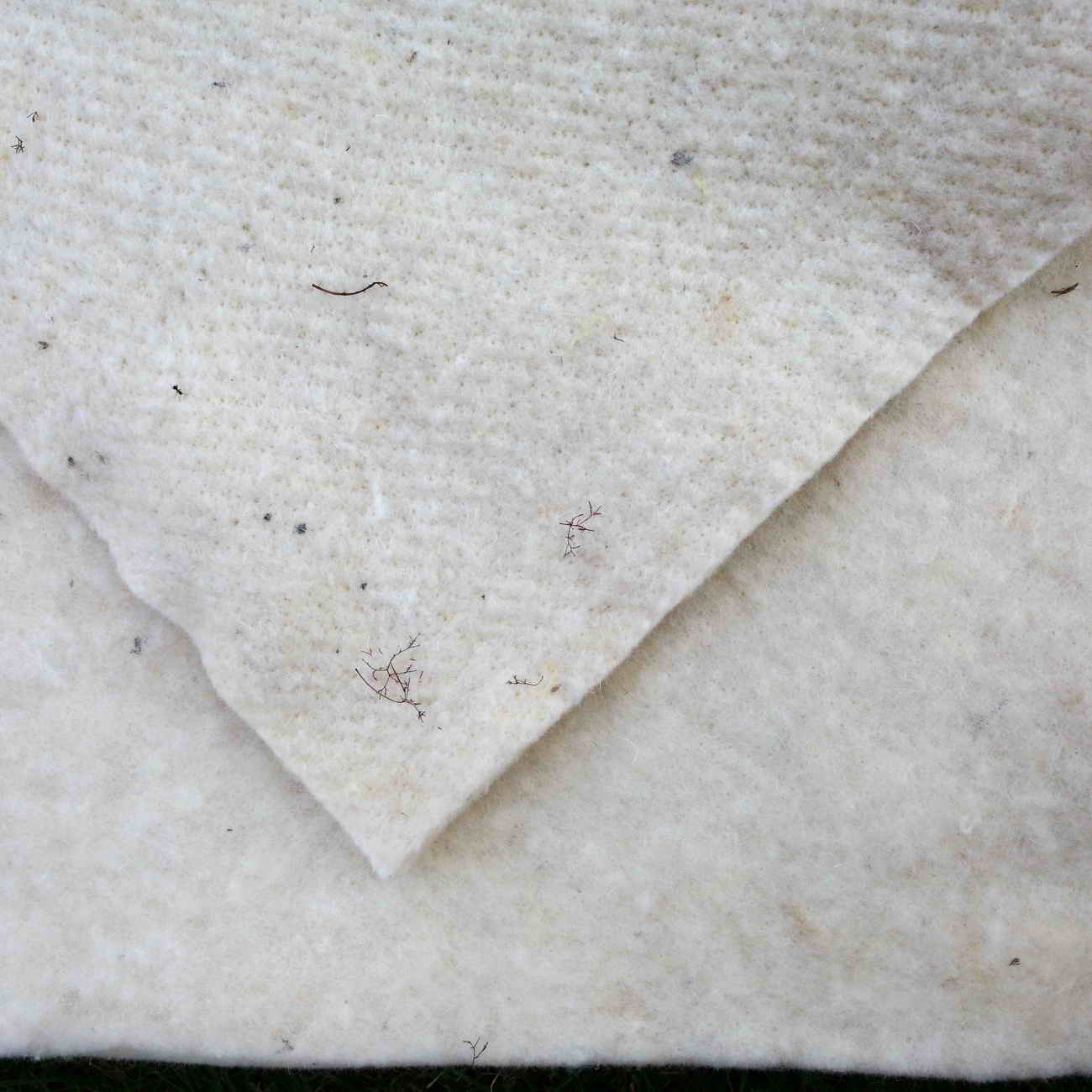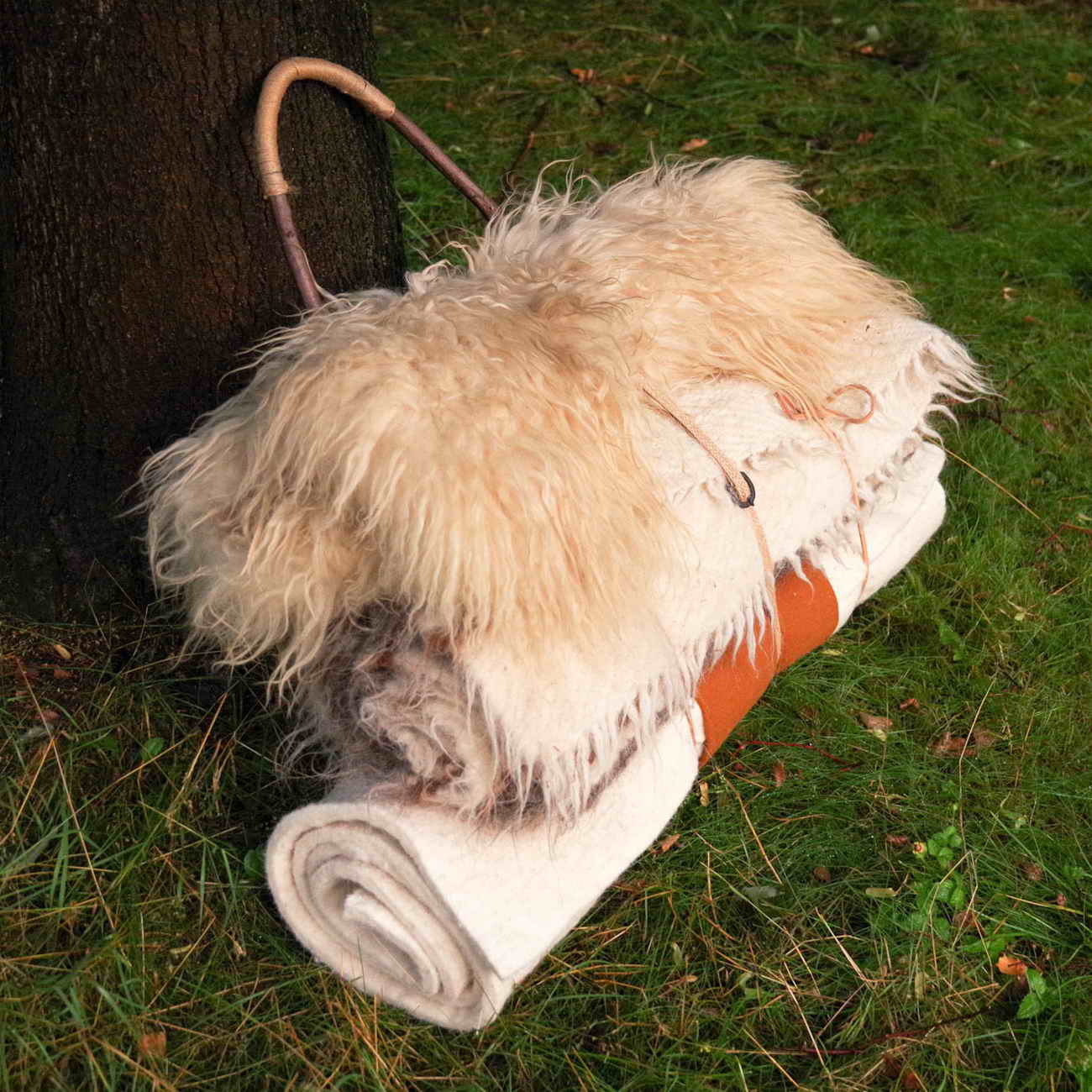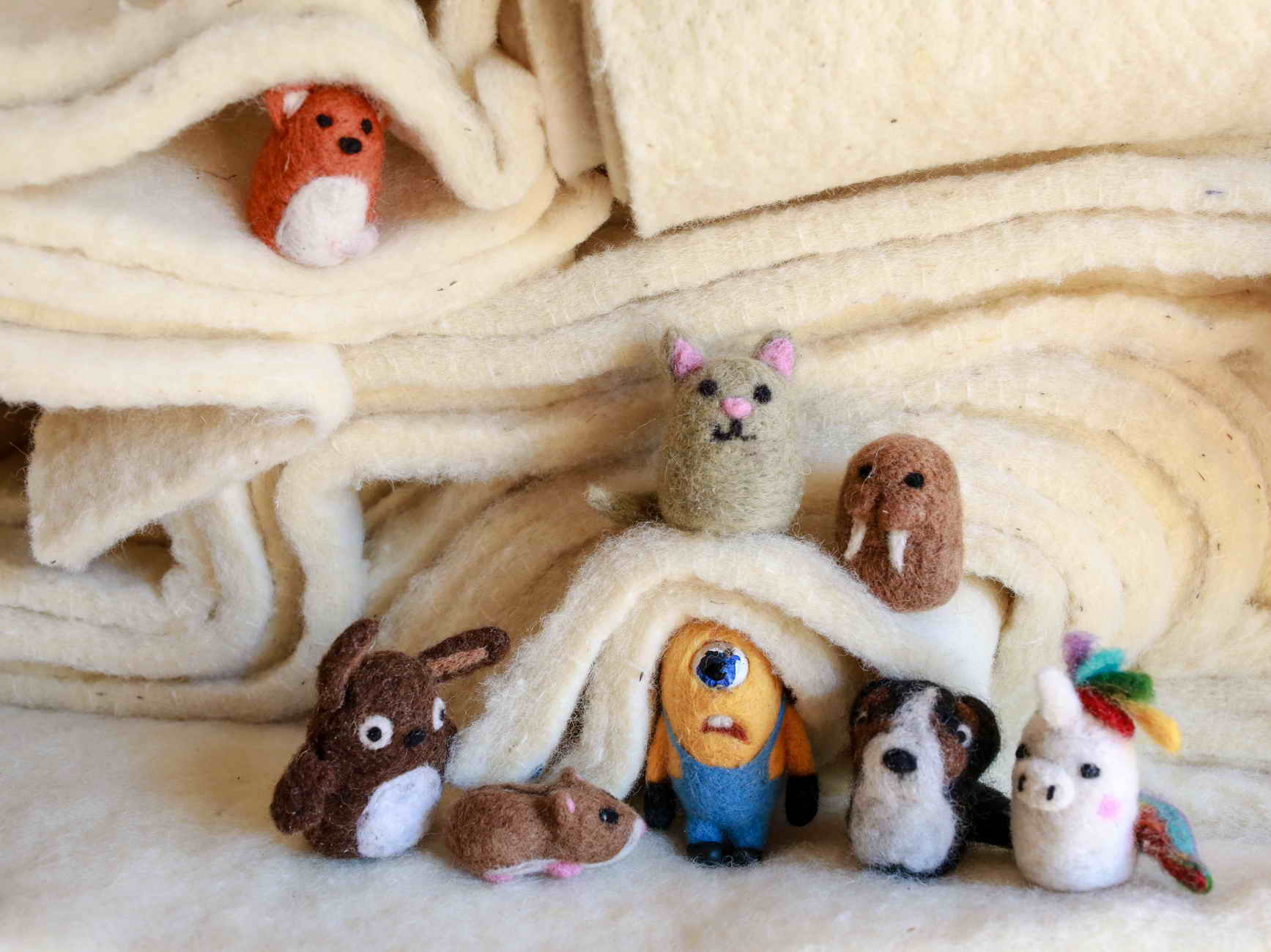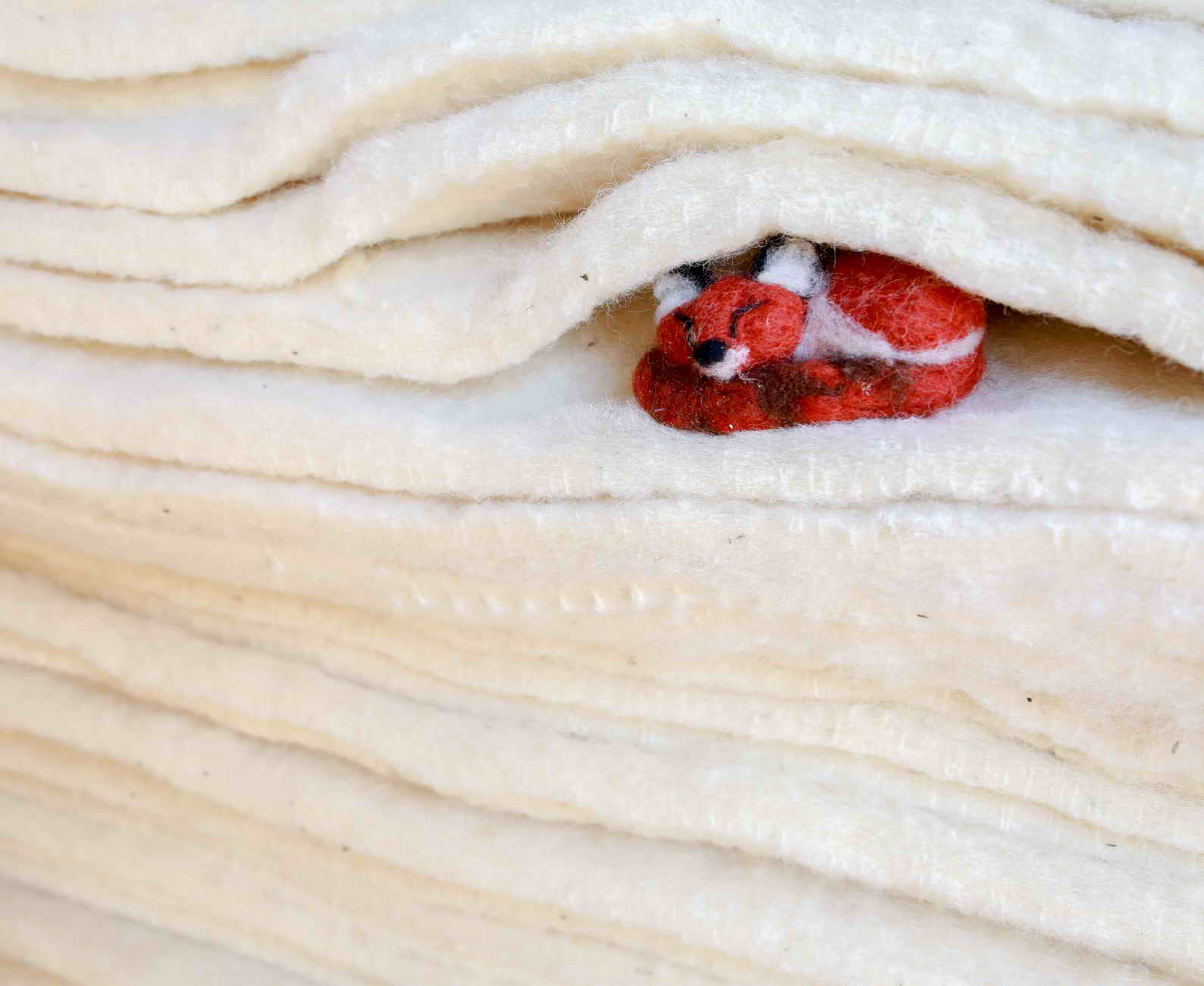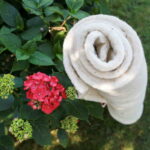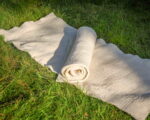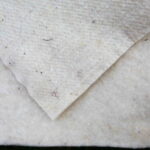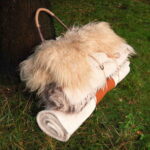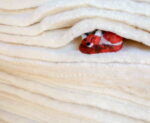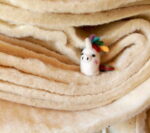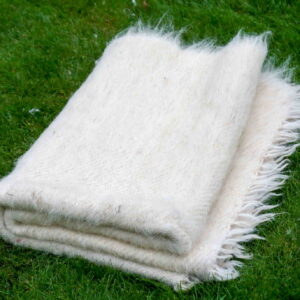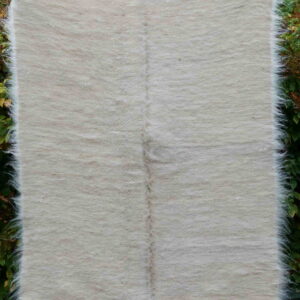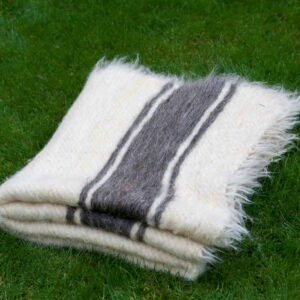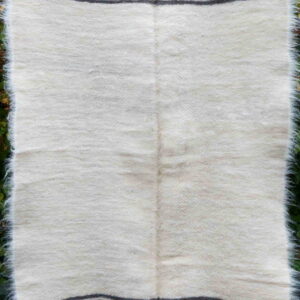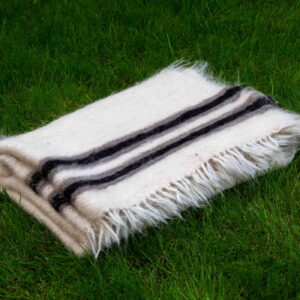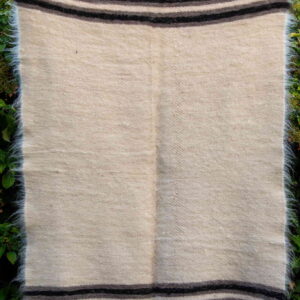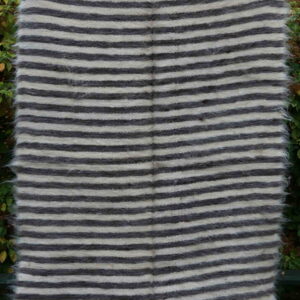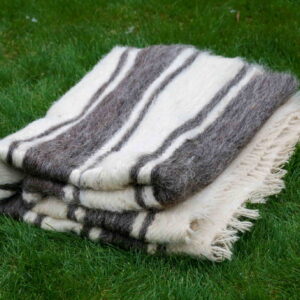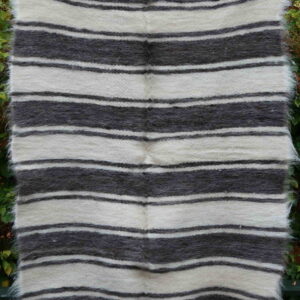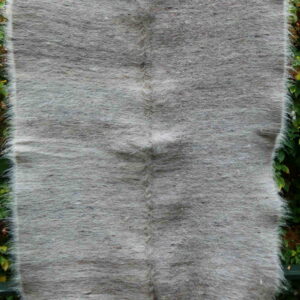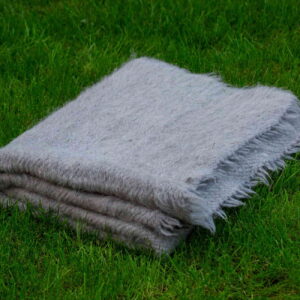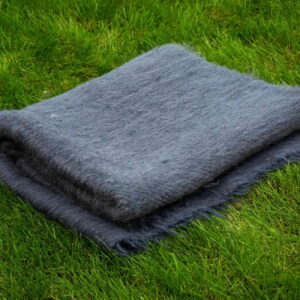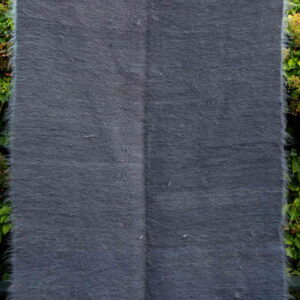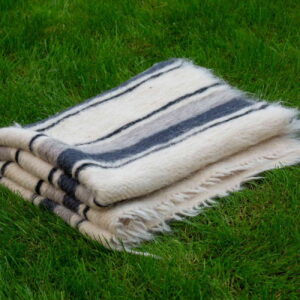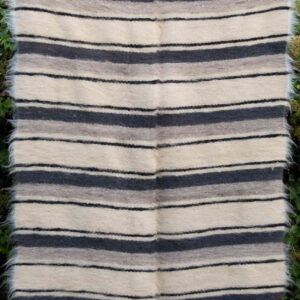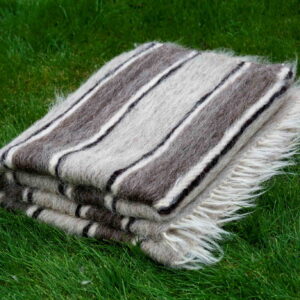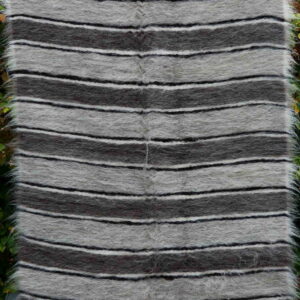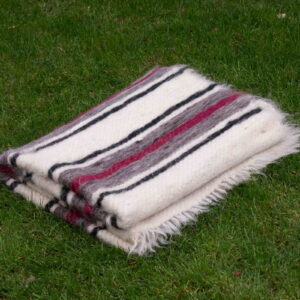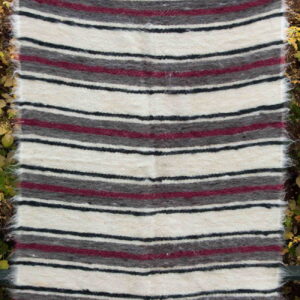Thanks to its thickness and natural wool properties, this felted mat provides great insulation from the cold ground while keeping you comfy. It is soft and comfy, helping you to get your well-deserved rest no matter the sleeping conditions.
2 meters long, 90 cm wide and 1,5 cm thick – all of that just screams “good sleep”. When rolled, the mat has a similar diameter to the standard, modern sleeping mat, yet its significantly greater width makes it comfier to sleep on as you can freely move throughout the night without having to worry about rolling out of it.
+100 points to #goodreenactment, +100 points to comfort and +50 points to your friends’ jealousy
Note!:
- We sometimes call it a “felted wool mat”, or “felt mattress”, but IT IS NOT a FELT ‘per se’ – it’s just a needled-through sheep fleece from one side only, less dense in texture and SOFTER than the regular felt. It is also way LIGHTER and way CHEAPER.
- It is prone to stretching. It cannot be pulled with items weighing several kg on it.
- For sleeping purposes, it is recommended to place sheepskins directly on the mat before you lay your body on it.
- If you want it denser, so that it is less prone to falling apart / decomposing, consider felting it more yourself.
The last batch of these mats was such a hit, that they sold out before we even managed to officially add them to the webshop, so… better grab yours while they’re still in stock



